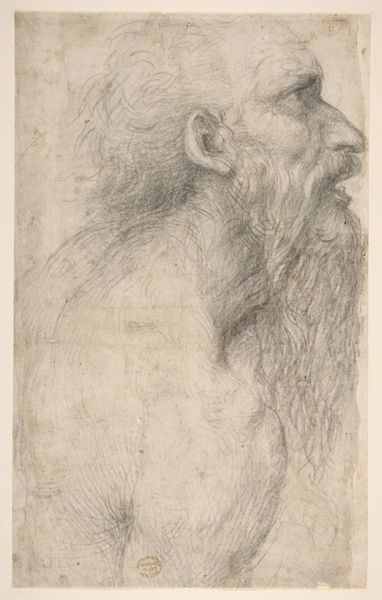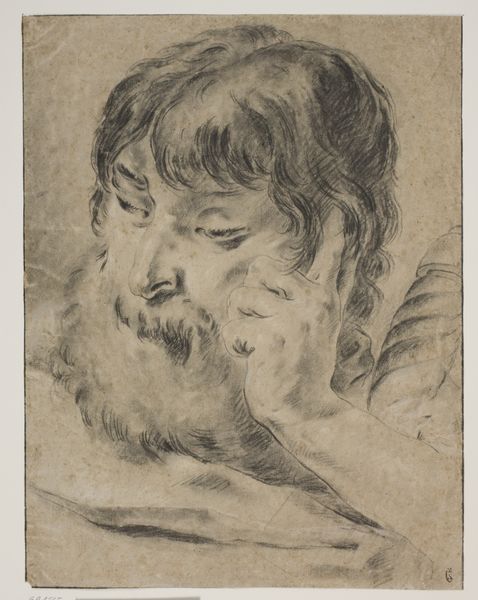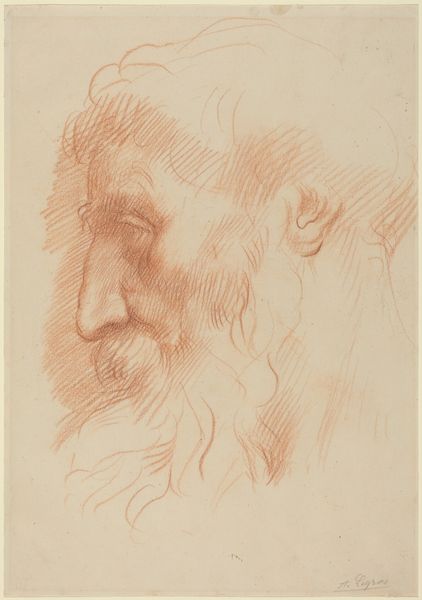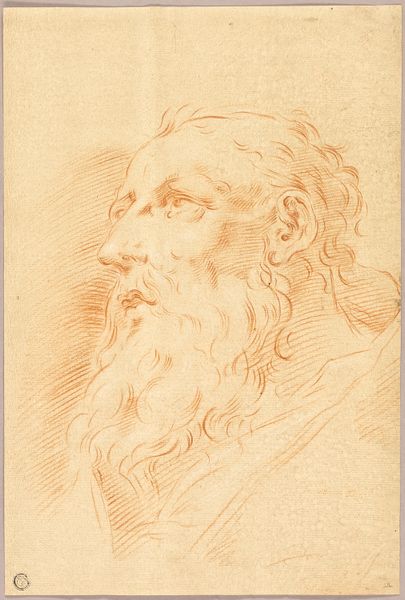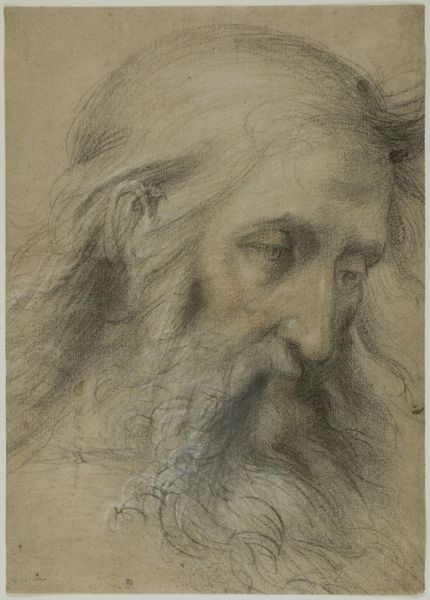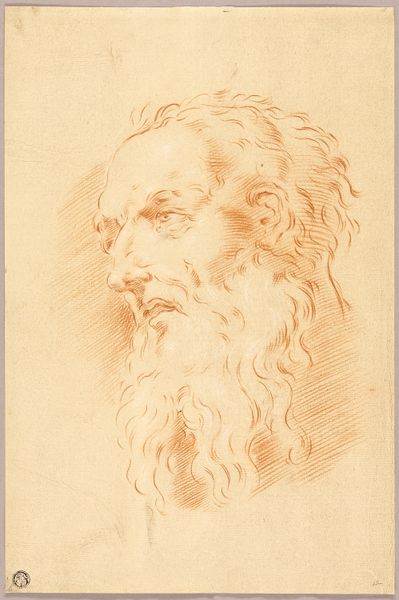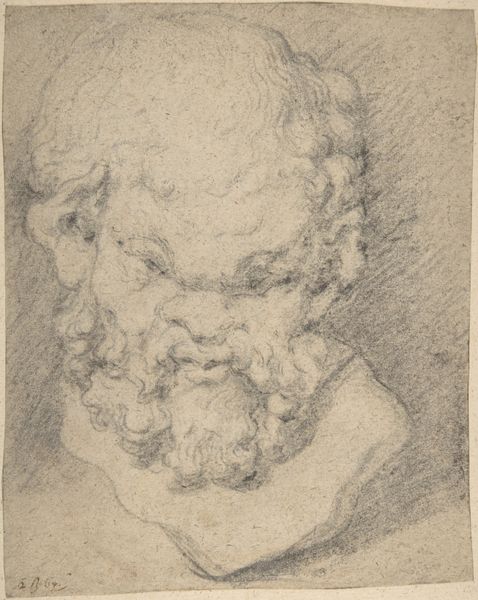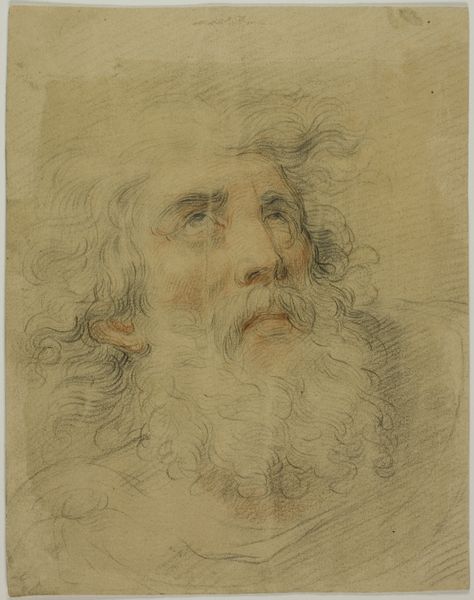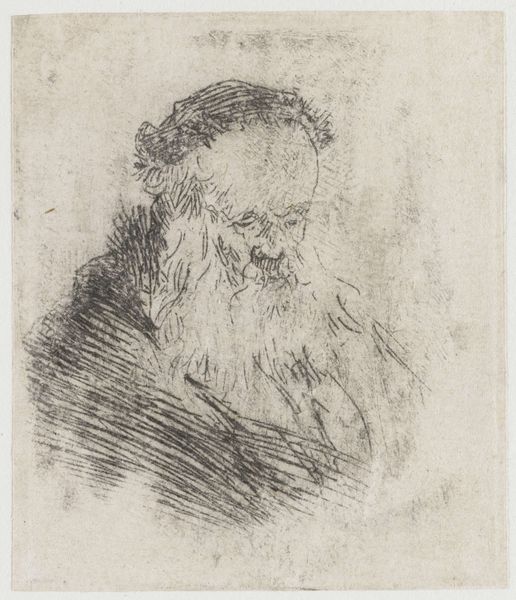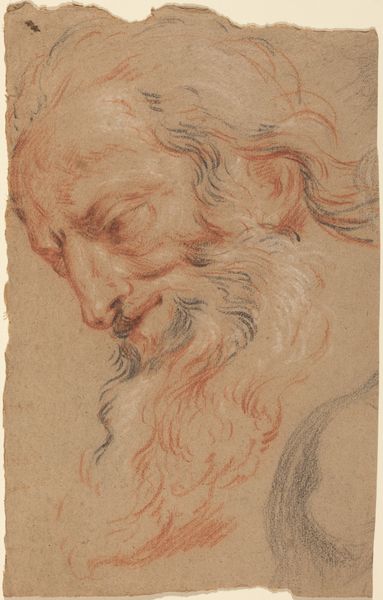
drawing, pencil
#
portrait
#
pencil drawn
#
drawing
#
head
#
charcoal drawing
#
11_renaissance
#
pencil drawing
#
pencil
#
men
#
italian-renaissance
Dimensions: 6 5/8 x 5 1/4in. (16.9 x 13.4cm)
Copyright: Public Domain
Curator: Welcome. Before us is Lorenzo Lotto's "Head of a Bearded Man," created between 1516 and 1517. It’s currently housed here at The Metropolitan Museum of Art. Editor: The first thing that strikes me is its ghostly presence; it seems almost like a preliminary sketch caught between intention and fading away, with the dense hatching lending an ethereal air. Curator: Indeed. Lotto uses the inherent qualities of pencil on paper to create form, prioritizing line and tonality. The directionality and density of these lines give the figure depth and weight, no? It’s a study in pure draftsmanship. Editor: But it’s the raw material itself I’m interested in – the pencils themselves. Where were they sourced? Who prepared the paper? Was this sketching a personal pursuit, or was it part of the larger workshop production, where many hands labored to create images for a patron? Curator: The sketch, undoubtedly, displays a masterful economy of line and precise calibration of shading, don't you think? Its semiotic power relies on the way line work transforms into depth, character, a psychological study emerging from a set of carefully placed marks. Editor: And that character – the grizzled, somewhat severe visage—it's tied to a system. Consider, where might he fit within the societal fabric of Lotto's Italy? Is he a tradesman, an aristocrat? This work gives us a brief glimpse of social and cultural forces working in tandem, revealing not just an individual but, perhaps, broader class realities in play. Curator: Yes, Lotto captures that character economically using shadow and implied form, wouldn’t you say? The composition relies not on narrative but purely on the visual relationship of tone and line—leading us back to his structural mastery of form. Editor: Agreed. However, I maintain that it’s essential to also acknowledge the invisible hands in the work and wonder if their contribution should also be valued within its construction of Renaissance imagery and ideals. It reminds me that great art always contains a myriad of invisible labor. Curator: A perspective well worth our contemplation! Editor: A fruitful line of thinking, indeed!
Comments
No comments
Be the first to comment and join the conversation on the ultimate creative platform.
